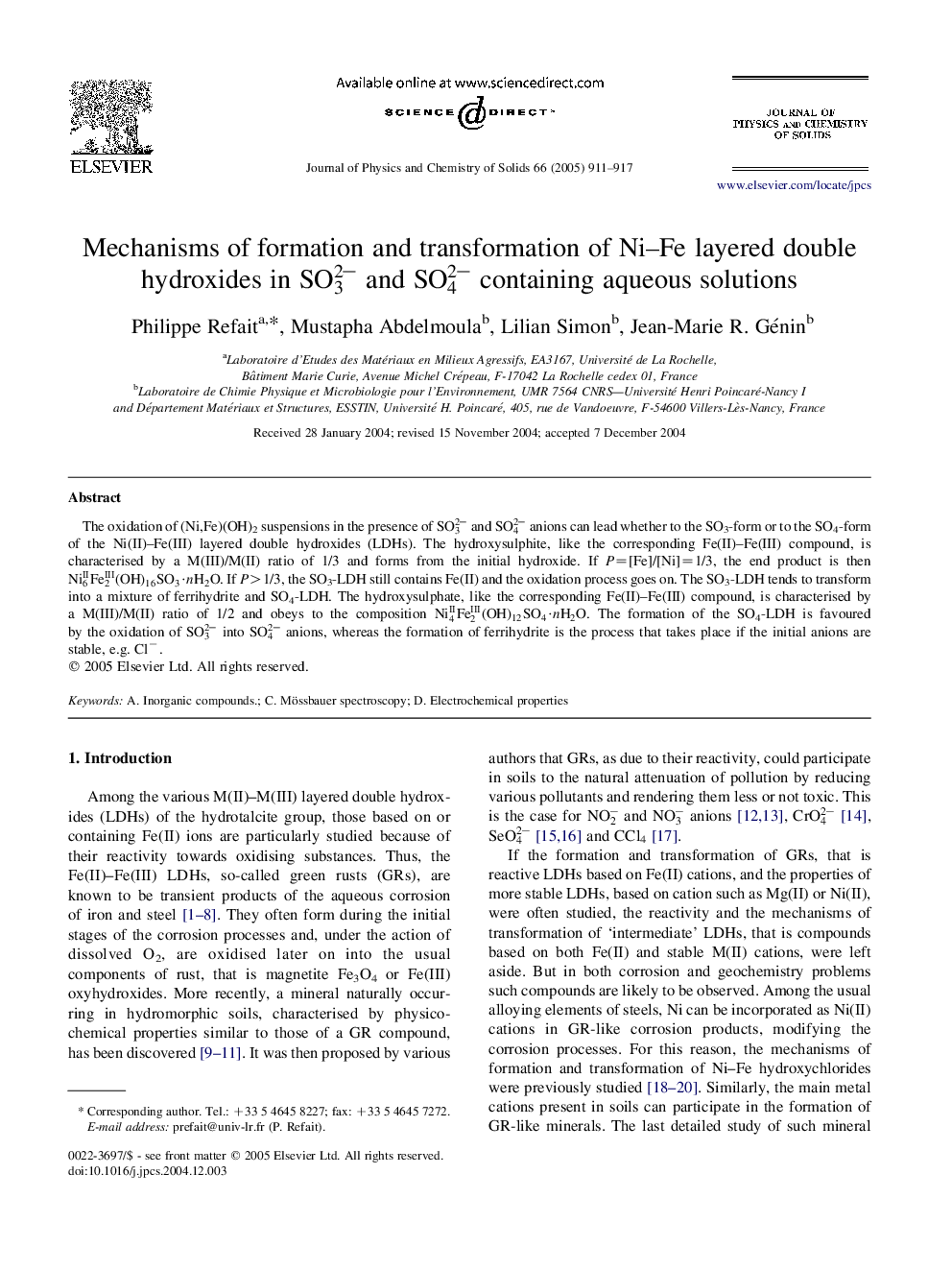| Article ID | Journal | Published Year | Pages | File Type |
|---|---|---|---|---|
| 9781749 | Journal of Physics and Chemistry of Solids | 2005 | 7 Pages |
Abstract
The oxidation of (Ni,Fe)(OH)2 suspensions in the presence of SO32â and SO42â anions can lead whether to the SO3-form or to the SO4-form of the Ni(II)-Fe(III) layered double hydroxides (LDHs). The hydroxysulphite, like the corresponding Fe(II)-Fe(III) compound, is characterised by a M(III)/M(II) ratio of 1/3 and forms from the initial hydroxide. If P=[Fe]/[Ni]=1/3, the end product is then Ni6IIFe2III(OH)16SO3·nH2O. If P>1/3, the SO3-LDH still contains Fe(II) and the oxidation process goes on. The SO3-LDH tends to transform into a mixture of ferrihydrite and SO4-LDH. The hydroxysulphate, like the corresponding Fe(II)-Fe(III) compound, is characterised by a M(III)/M(II) ratio of 1/2 and obeys to the composition Ni4IIFe2III(OH)12SO4·nH2O. The formation of the SO4-LDH is favoured by the oxidation of SO32â into SO42â anions, whereas the formation of ferrihydrite is the process that takes place if the initial anions are stable, e.g. Clâ.
Related Topics
Physical Sciences and Engineering
Materials Science
Electronic, Optical and Magnetic Materials
Authors
Philippe Refait, Mustapha Abdelmoula, Lilian Simon, Jean-Marie R. Génin,
